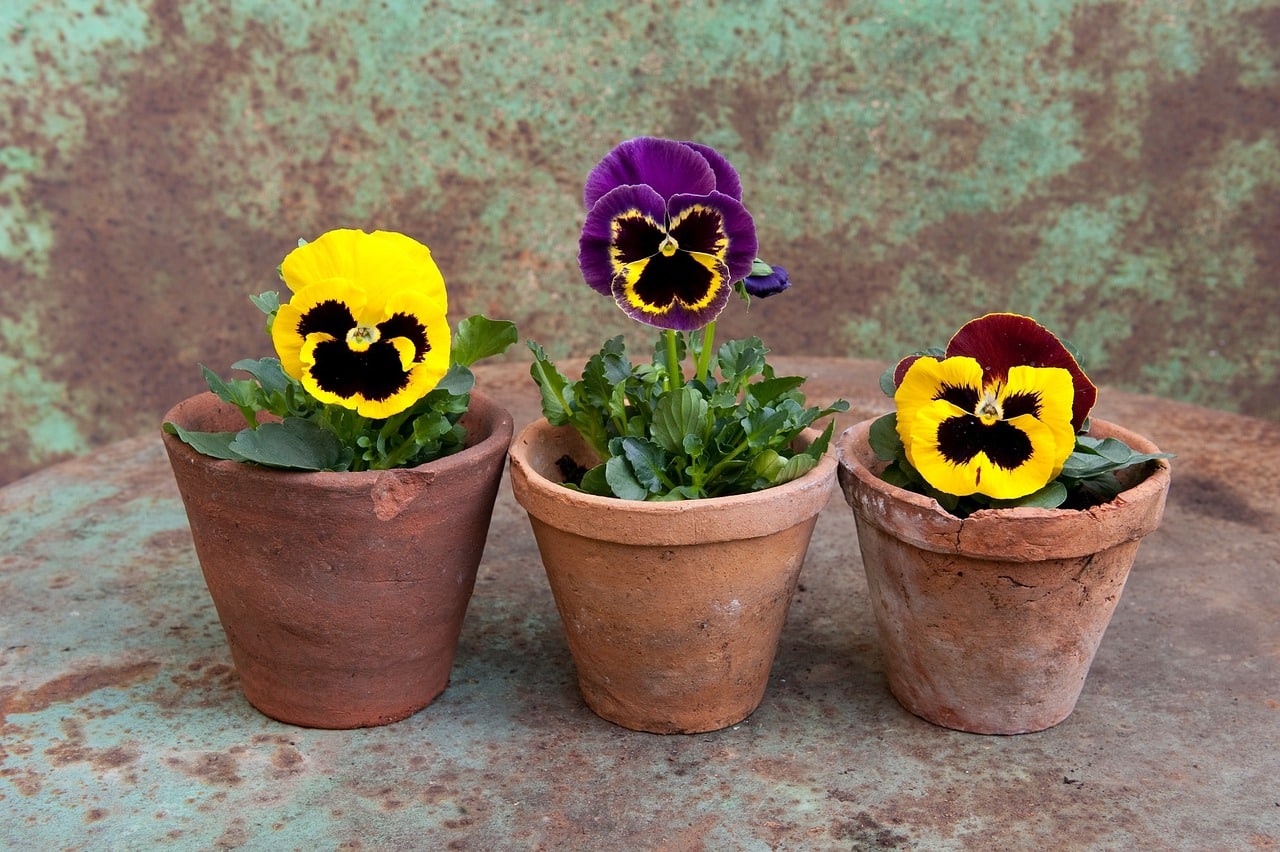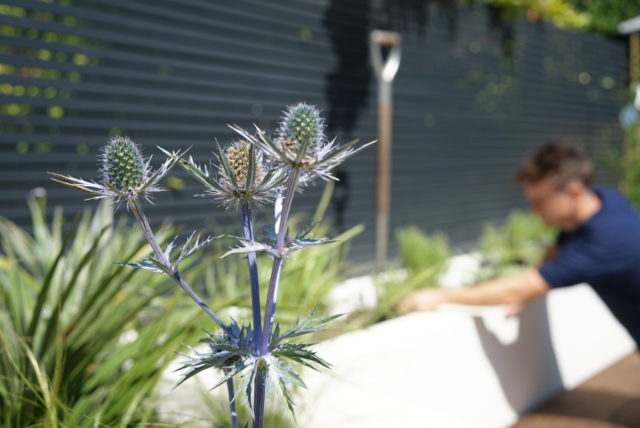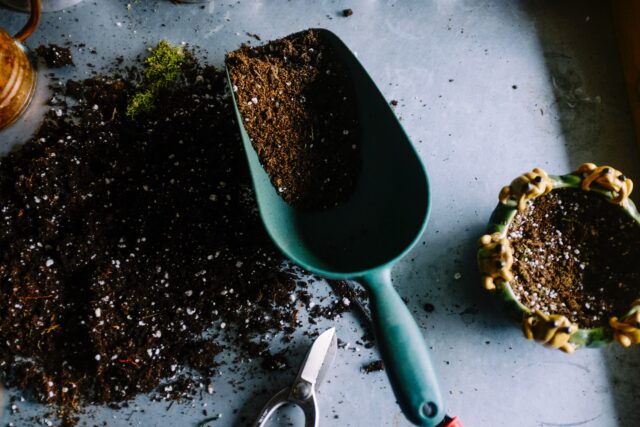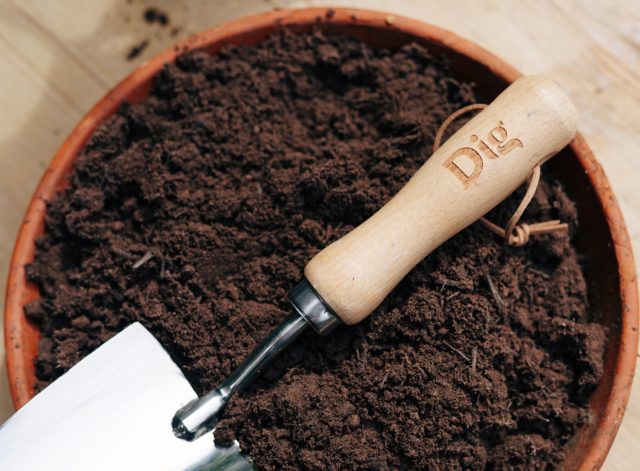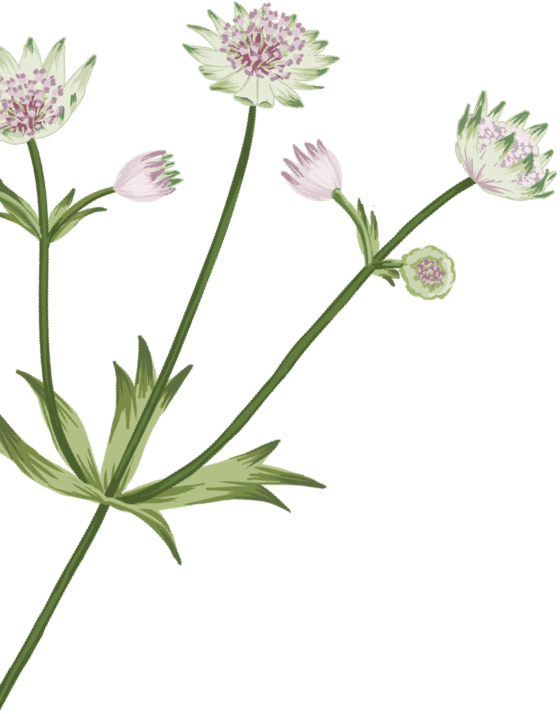Before diving in, it’s worth mentioning that we’re running the Dig Spring Countdown once again. We started this series of hints and tips last year over on Instagram (@dig_club) to help you get your outdoor spaces ready for spring, and it’s back. So, if you like your gardening advice in video, carousel and story format – you know where to find us!
To chop or not to chop…
For many plants, spring means its time for a trim – before they become too active and before any vigorous new growth begins.
Ornamental grass care
If you haven’t already, now is the time to cut back many grasses – as soon as the new growth starts to emerge from the base of the plant. Below are a few common grasses that we use in our themes and how to care for them.
- Combing through: using gloved hands or even a cutlery fork, comb through the blades of grass to remove any dead, old growth. If they’re ready to leave the plant they should come easily.
- Cutting back: Grabbing large handfuls of the blades of grass, use sharp secateurs to slice through just above the base of the plant – it can seem extreme but allows air, space and energy for the new growth to emerge.
- Dividing: Some grasses can be divided when they are becoming a little too big for the space they’re in. Remove the plant carefully from the soil and, using a trowel or a spade if big enough, divide the plant through the middle of the root ball. Immediately replant where you want the new plants to be positioned and water in.
Common Dig grasses:
- Anemanthele lessoniana – comb through, can be divided
- Stipa tenuissima – comb through, can be divided
- Hakonechloa macra – cut back to the ground, can be divided
- Pennisetum ‘Fairy Tales’ – cut back to the ground, can be divided
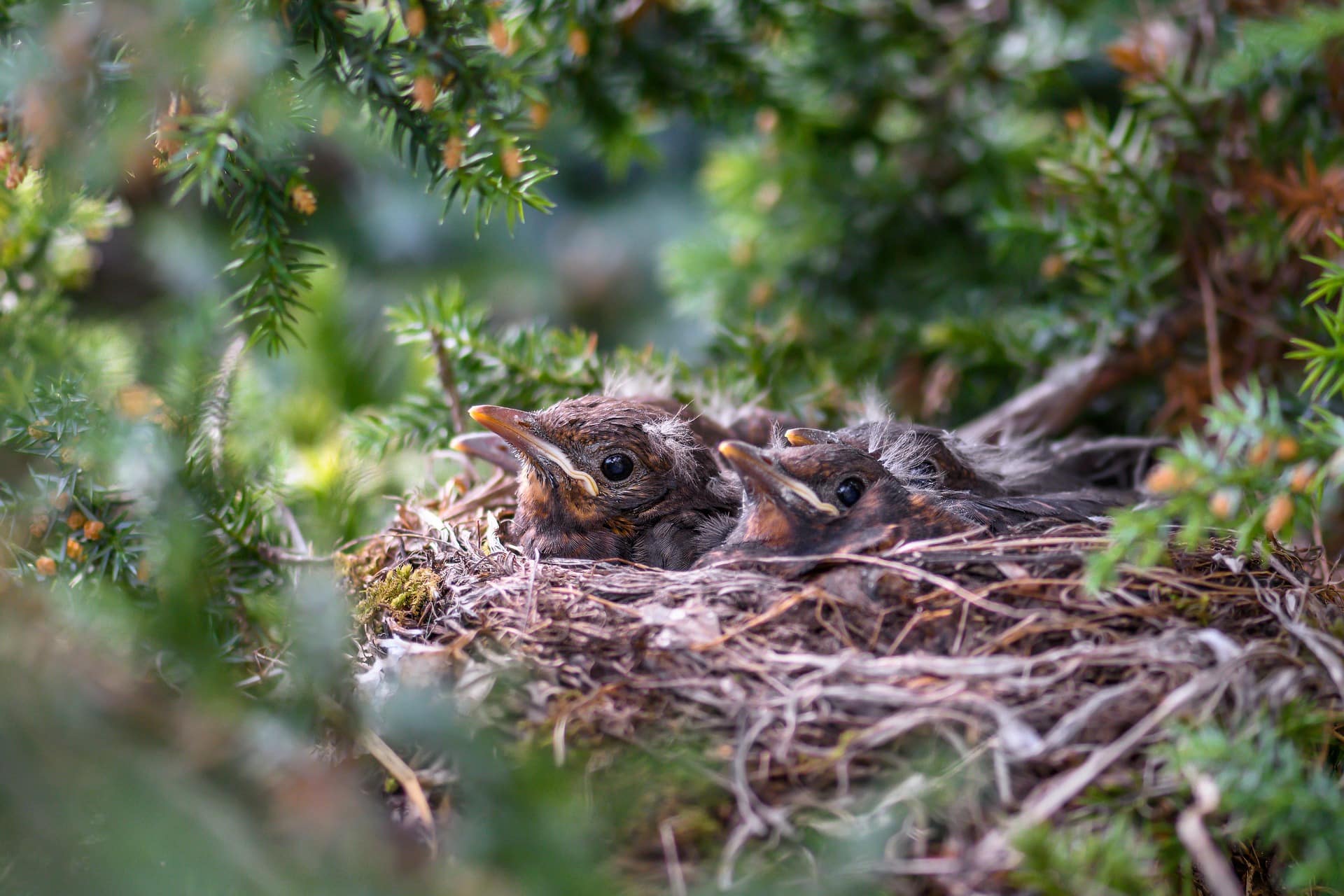
Check trees or hedges that you’re thinking of pruning for any bird nest construction that might be underway…
Hold back on pruning hedges
Now that new green growth will be coming through, birds will be beginning to build their nests in hedges and trees. You won’t want to disturb them, so it’s better to wait until autumn now once young birds have fledged. If you absolutely must tidy up hedges, do everything you can to check whether or not they have any new feathery residents setting up shop first.
Prune Buddleia
Dig Customers with our Adventure theme may well have a beautiful Buddleia to look forward to. These butterfly magnets really benefit from an early spring prune, encouraging lots of new growth later in the year. Chop them down to about 10cm above the ground for a manageable plant. Chop back by half if you’d prefer something taller.
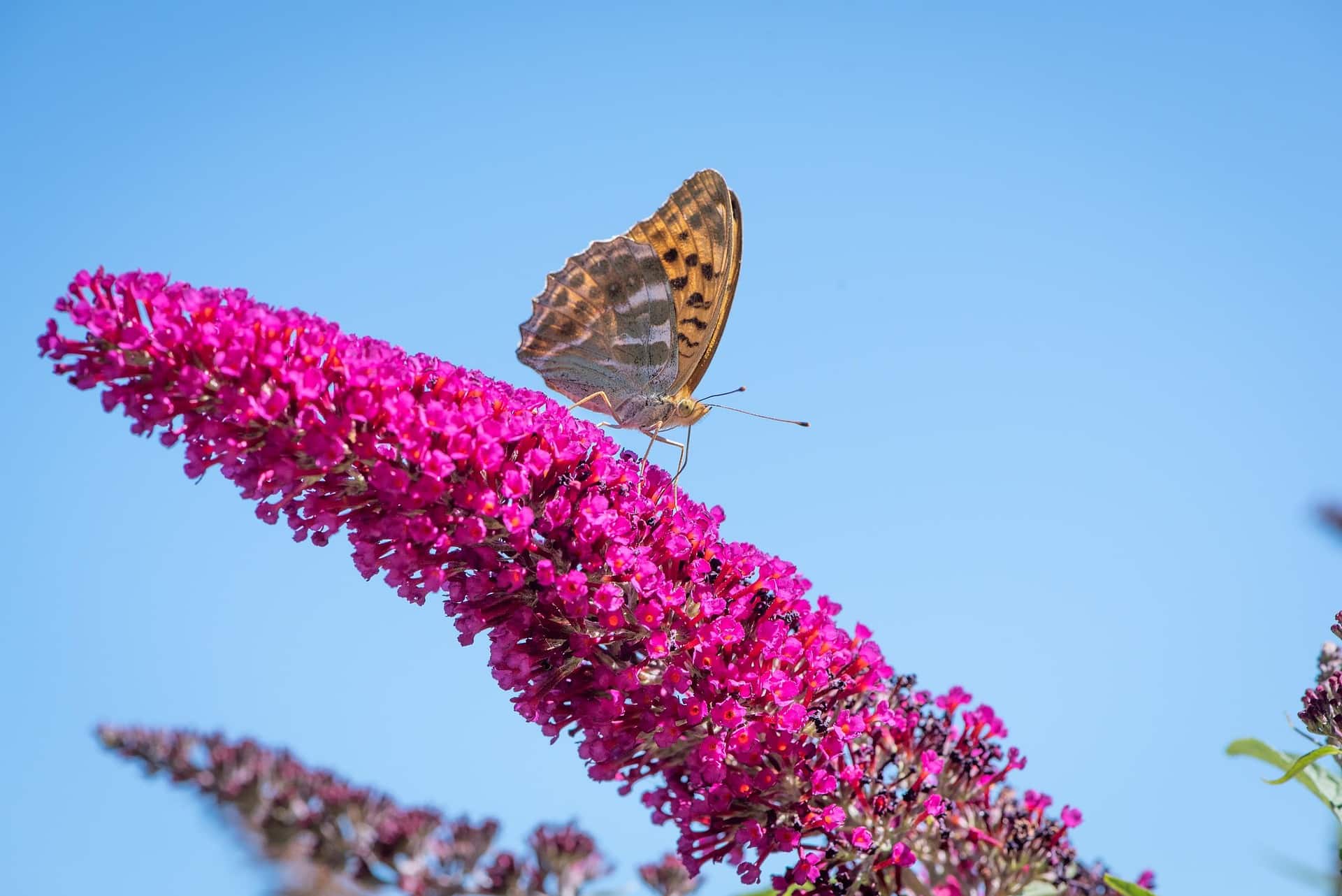
Come summer, the new flowers on your Buddleia will be a magnet for butterflies, which need all the help they can get!
Cut back old Verbena bonariensis growth
As new growth starts to appear at the base of the plant, cut back the old dead growth on Verbena bonariensis to make way for beautiful spires of purple flower clusters come summer.
Prune and mulch roses
We regularly use Rosa ‘Gertrude Jekyll’ in our designs – especially in The Cottage. Gertrude Jekyll is a ‘shrub rose’ and it’s best to prune them in February and March before things kick off again. Flowers on shrub roses often to prefer to grow on old wood, rather than fresh new growth. Therefore they require very little maintenance (which is why we’ve chosen them!). Light pruning and shaping, leaving a combination of newer and older growth is the way forward. Take newer growth back by about ⅓, chop off new side-shoots to about two buds, and, when that’s all done, give them a healthy amount of mulch to feed the soil with new nutrients.
Top tips for smartening up your outdoor space in spring
The first signs of spring are usually a good prompt to tidy up your outdoor space. Here are a few quick fire things you can do now to hit the ground running on 20 March:
- Edge your lawn with a hoe or other sharp tool along the edge of flower beds to create beautiful clean lines
- Clean your patio with a pressure washer or a hard bristled brush and a bit of elbow grease.
- Sweep up debris and dead branches and leaves from behind pots. Whether you’re on a patio, garden or balcony, you’ll be surprised by how much has collected in and amongst them.
- On a similar note, remove dead leaves from the base of plants in the ground. Clumps of wet leaves that cling to the base of plants can risk rotting and disease.
- Add pansies! As Cyclamen and Hellebores start to fade, you can easily bring in a few flashes of colour with pansies at this time of year. They’re affordable and come in plenty of colours so, whether used sparingly or extravagantly, we think they’re an underrated brightener for any outdoor space.
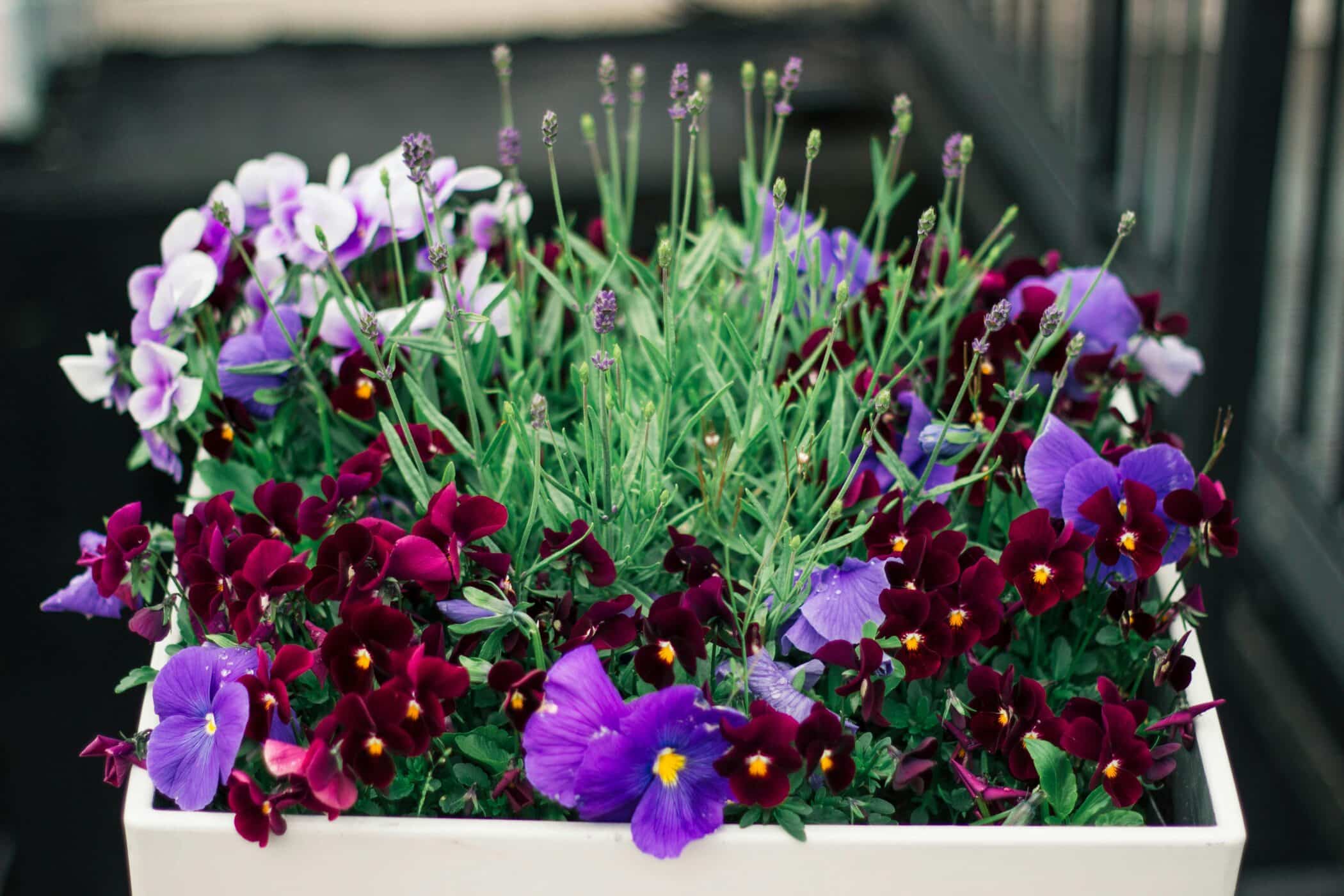
Pansies look great in windowboxes and flowerbeds alike and, with so many colours, can pair beautifully with all of our themes.
Planting perennials
Early flowering perennials thrive when planted in spring. You can nestle them among other plants or pot them up into vibrant spring displays. To save you the hassle of finding early perennials that work together though, take a look at our Spring Seasonal Star collection
Divide your snowdrops
As snowdrops come to an end and flowering finishes you can divide snowdrops to extend your collection. Snowdrops spread naturally over time, but by dividing and repositioning you will give yourself placement control and the option of moving them into new areas of your outdoor space. Lift them with a hand trowel and gently tease apart the roots, carefully replant them in the desired area and give them a good water.
Gardening for nature
- Create a hedgehog highway by making a small hole in the bottom of your fence – especially if your garden is otherwise contained. Hedgehogs can travel huge distances overnight, but not if the path is blocked.
- As hedgehogs emerge from hibernation, they will be hungry. By encouraging lots of insects into your garden with bug hotels and log piles, you’ll ensure a healthy supply of sustenance for any prickly visitors. If you noticed hedgehogs regularly visiting your garden, a handful of small catfood biscuits in water might be a welcome additional food source. We recommend not leaving this out full time – perhaps for a few hours before you go to bed – as it will attract, well, cats instead.
- Garden birds will be extremely active over the next few weeks. Continue to feed them as they’ll need the energy for raising young.
- Following on, it can’t hurt to give all of your feeders a good clean too – especially ahead of newly fledged young in a couple of weeks and months’ time.


